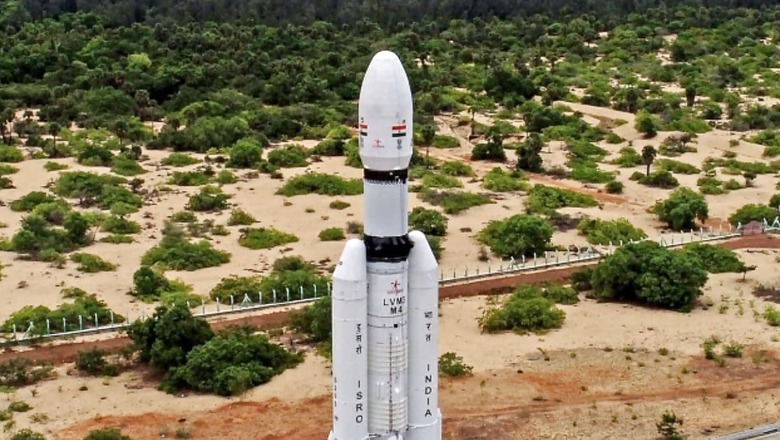
views
Space exploration has always possessed the power to captivate the imagination and curiosity of the majority of individuals and has reached new heights thanks to the quest for knowledge and adventure. India’s space agency, the Indian Space Research Organisation (ISRO), has been at the forefront of scientific achievements. The vastness of space has continually fascinated mankind and compelled individuals to investigate its depths, and ISRO has played a crucial part in doing so by launching several space missions such as the Chandrayaan series of lunar expeditions.
With the launch of the Chandrayaan-3 moon mission, India’s space programme attracted attention from all around the world and led to unparalleled levels of growth and development.
ISRO’s Chandrayaan missions have established India as a serious force in the field of space exploration. ISRO has constantly proved its commitment to scientific investigation and technological advancement through the accomplishments of Chandrayaan-1 and Mangalyaan as well as the lessons learned from the challenges that they encountered during Chandrayaan-2.
In this week’s classes with News18, let us take a look at the significance of ISRO, the triumphs and results of the individual Chandrayaan missions, and the highly anticipated Chandrayaan-3, which was launched from Sriharikota on July 14.
ISRO – Pioneering India’s Space Exploration
Since its inception in 1969, the ISRO has evolved as a major force in space research and technology. The significant role of ISRO extends beyond its accomplishments in space exploration. It has helped launch satellites for communication, forecasting weather conditions, remote sensing, and other functions. In addition to making India a self-sufficient country in terms of space technology, ISRO’s efforts have also created a feeling of national pride and motivated numerous young people to seek careers in science and engineering. The Mars Orbiter Mission, commonly known as Mangalyaan, launched by ISRO and the Chandrayaan lunar missions together serve as examples of India’s scientific competence.
Chandrayaan-1
Launched on October 22, 2008, Chandrayaan-1 was a historic mission that represented India’s maiden foray into lunar exploration. The mission’s goals included mapping the Moon’s surface in three dimensions, analysing its mineral composition, and looking for evidence of water.
Chandrayaan-1’s mission saw considerable advancements thanks to its superior scientific instruments. One of its most significant findings was the discovery of water molecules on the Moon’s surface, which challenged previously held notions. In addition, the mission shed important light on the Moon’s geological evolution by identifying substances and minerals including silicon, calcium, iron, magnesium, and aluminium. Notably, Hematite was found at the lunar poles, according to data from the Mineralogy Mapper (M3), one of Chandrayaan-1’s sensors.
By the time connection with the spacecraft was lost on August 29, 2009, the satellite had completed more than 3400 orbits around the Moon.
Chandrayaan-2
The ambitious Chandrayaan-2 mission was launched by ISRO on 22 July 2019, building on the accomplishments of Chandrayaan-1. The orbiter, Vikram the lander, and Pragyan the rover were the components that made up Chandrayaan-2. The objective of this mission was to deploy a rover on the Moon’s surface close to the unexplored South Pole.
The lander experienced difficulties during its descent as it approached the moon’s surface at a distance of only 335 metres. However, communication with it was lost shortly before impact, impeding the successful accomplishment of the mission’s goals. The orbiter did, nevertheless, continue to monitor the lunar surface and environment. According to ISRO, the lander and rover’s losses accounted for only 5 per cent of the overall mission failure.
Despite the setback, the orbiter of Chandrayaan-2 was fully operational and continues to collect crucial data. It has taken high-resolution photos of the Moon, mapped its surface, and analysed its minerals, all of which have contributed to the ISRO’s scientific knowledge of lunar science.
Chandrayaan -3
The loss of the Chandrayaan-2 lander, Vikram, further highlighted the inherent challenges of space missions as well as provided ISRO with the confidence to commit to overcoming these difficulties using lessons learned from previous missions.
The Chandrayaan 3 lunar mission spacecraft that launched on July 14 did not include an orbiter on board, in stark contrast to Chandrayaan 2. The absence of the orbiter gave ISRO scientists and engineers more space within the rocket to work on strengthening the landing gears of Chandrayaan 3’s lander, Vikram.
The Chandrayaan 3 spacecraft feature a payload dubbed Spectro-polarimetry of HAbitable Planet Earth (SHAPE), which did not exist in the previous mission. It is believed that Chandrayaan 3 is less likely to lose touch with ISRO or alter its course than the last moon mission due to SHAPE, which was built to analyse the spectral and polarimetric measurements of Earth from lunar orbit.
To learn about other topics taught in school, explained by News18, here is a list of other Classes With News18: Queries Related to Chapters on Elections | Sex Versus Gender | Cryptocurrencies | Economy & Banks | How to Become President of India | Post Independence Struggle | How India Adopted Its Flag | Formation of States & United India | Tipu Sultan | Indian Teachers Day Different from Rest of the World |Queen Elizabeth & Colonialism | Article 370 |




















Comments
0 comment